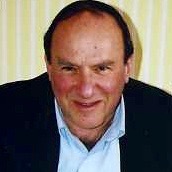 James T. Sherwin James T. Sherwin was a high ranking executive officer at GAF Corporation. In 1986 GAF tried to take over Union Carbide but failed. This failed effort left GAF owning 10% of Union Carbide’s stock and GAF wanted to sell it in a block. Such sale prices were generally slightly lower than the price on the market. It was later alleged that Sherwin contacted Boyd Jeffries, who ran an investment firm, to make a deal to manipulate the price of Union Carbide stock so that the block price would be favorable to GAF and that GAF would then reimburse Jeffries for any loss.
Between late October and early November of 1986, Jeffries made a series late-in-the-day trades to acquire Union Carbide stock, with the effect that it always closed at $22 or higher. This allowed GAF to dispose of its stock at favorable prices. Jeffries lost $40,000 in these deals and asked GAF to reimburse him. Sherwin had a check prepared, but declined to send it because he thought it would be improper. Jeffries was later charged with numerous securities crimes and agreed to become a witness for the government. Jeffries implicated Sherwin, and Sherwin was arrested by federal authorities on July 6, 1988. He was charged with conspiracy to violate federal securities and anti-fraud laws, securities fraud, and wire fraud.
Sherwin was tried three times in the United States District Court for the Southern District of New York. The two principal witnesses were Jeffries and James Melton, the trader who executed the deals. The first trial commenced on December 21, 1988, but was quickly declared a mistrial after it was revealed that the prosecutors had failed to provide Sherwin with an expert report regarding possible alteration of GAF files. The second trial was declared a mistrial on March 23, 1989 after the jury deadlocked.
Federal prosecutors then changed their theory. Melton had said he only talked with Sherwin after the October trades, to report what he had done, but had taken all of his orders from Jeffries. Federal prosecutors decided to prosecute Sherwin for the October trades only, and claim that the later trades were just normal investments, because the evidence of improper conduct was stronger for the October trades. Sherwin wanted to show the jury the government’s bill of particulars in the earlier case and argue that since the Government itself believed that all the trades were connected, the new prosecution theory was absurd; he was not allowed to do so. On December 13, 1989 Sherwin was convicted by a jury in the United States District Court for the Southern District of New York and sentenced to 6 months in prison.
Sherwin appealed. The United States Court of Appeals for the Second Circuit reversed on March 18, 1991, holding that in this case, but not generally, the bill of particulars was evidence that should have been presented to the jury because it was the essence of the defense case. A new trial was ordered, but on August 9, 1991, the prosecution dismissed all charges against Sherwin. Nonetheless, Sherwin’s reputation had been ruined, he lost his job and couldn’t find another one, and ended up moving to Switzerland.
— Michael S. Perry |